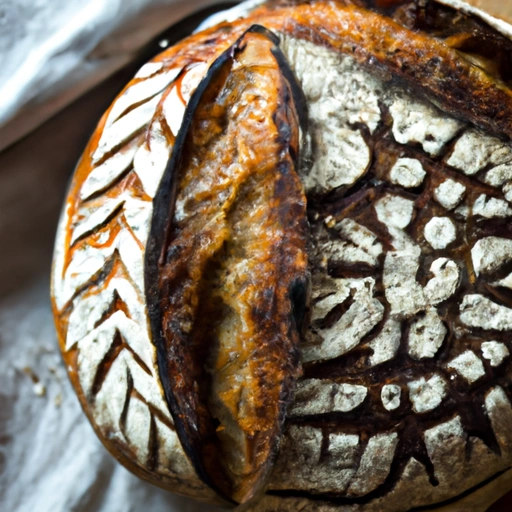Sourdough Bread
Description

Sourdough bread is a type of bread made from naturally occurring yeast and lactic acid bacteria. The traditional process of making sourdough involves fermenting the dough, which gives the bread a distinctive tangy flavor. Unlike breads made with commercial yeast, sourdough bread typically has a chewy texture and a crisp crust. It's a versatile ingredient enjoyed in a variety of dishes around the globe.
Common uses
Sourdough bread is commonly used in sandwiches, as a base for bruschetta, or simply enjoyed with a smear of butter. It's also a popular choice for making croutons for salads, breadcrumbs for coatings, or as an accompaniment for soups and stews.
Nutritional value
Calories
One slice of sourdough bread (approximately 64 grams or 2.25 ounces) contains around 160 to 170 kcal (calories).
Protein
Sourdough bread typically contains about 6 to 8 grams of protein per slice.
Fat
The fat content is usually low, with about 1 to 2 grams of fat per slice.
Carbohydrates
Carbohydrates amount to about 30 to 35 grams per slice, with a portion of it being dietary fiber.
Vitamins
Sourdough bread contains small amounts of B vitamins, including thiamin and folate.
Minerals
It also provides minerals such as selenium, iron, and magnesium in varying amounts depending on the flour used.
Health benefits
Sourdough bread's fermentation process can make it easier to digest and can help improve gut health due to the presence of probiotics. The lactic acid bacteria in sourdough may also help lower the bread's glycemic index, which can be beneficial for blood sugar control.
Potential risks
For individuals with celiac disease or gluten sensitivity, traditional sourdough bread made from wheat, rye, or barley can cause adverse reactions due to gluten. Additionally, overconsumption may lead to weight gain or spike blood sugar levels.
Common recipes
Sourdough bread is featured in a range of recipes, from rustic sandwiches and artisanal toasts to savory French toast and comforting bread pudding.
Cooking methods
It can be baked, grilled, toasted, or used fresh, depending on the recipe and desired texture.
Pairing with other ingredients
Sourdough bread pairs well with a variety of foods, including cheeses, cured meats, jams, and even delicate seafood. Its tangy flavor complements both sweet and savory toppings.
Summary
Sourdough bread is a beloved culinary ingredient with a rich history and a unique, tangy taste. It is suitable for a diverse array of dishes and offers various health benefits as part of a balanced diet. While it's generally healthy, those with gluten-related disorders should exercise caution. Whether used in traditional recipes or innovative culinary creations, sourdough bread adds depth and flavor to any meal.